Table of Contents
- When it comes to designing your bedroom, you’re faced with a delightful dilemma
- Nostalgic Appeal
- Antique Furniture
- Soft Color Palettes
- Eclectic Decor
- Textured Fabrics
- Timeless Elegance
- Cozy Atmosphere
- Personal Story
- Sustainability
- Limited Availability
- Space Constraints
- Maintenance
- Minimalist Aesthetics
- Sleek Materials
- Neutral Color Palettes
- Functional Decor
- Technology Integration
- Contemporary Appeal
- Space Efficiency
- Easy Maintenance
- Technology Integration
- Potential Sterility
- Lack of Personality
- Rapid Trend Changes
When it comes to designing your bedroom, you’re faced with a delightful dilemma
choosing between vintage and modern aesthetics. Each style has its unique charm, offering a distinct atmosphere and visual appeal. In this article, we’ll delve into the world of interior design to explore the characteristics, pros and cons of vintage and modern bedroom aesthetics, helping you decide which one best suits your personal taste and lifestyle.
When it comes to designing your bedroom, the choice between vintage and modern aesthetics is more than just a matter of preference; it’s a reflection of your personality and the ambiance you want to create. Let’s dive deeper into the world of interior design and explore the characteristics, benefits and considerations of vintage and modern bedroom aesthetics, providing you with valuable insights to make the perfect choice:
Vintage Aesthetics:
- Timeless Charm: Vintage aesthetics transport you to a bygone era, evoking nostalgia and a sense of history. The charm of vintage lies in its ability to infuse your bedroom with character and stories of the past.
- Unique Finds: Scouring antique shops and flea markets for vintage pieces can be an adventure in itself. Each find tells a unique story and incorporating these treasures into your bedroom design adds a layer of authenticity and individuality.
- Warm and Cozy: Vintage aesthetics often embrace warm color palettes, soft textures and ornate details. This creates a cozy and inviting atmosphere that’s perfect for a retreat from the modern world.
- Sustainability: By choosing vintage or repurposed furniture and decor, you’re contributing to sustainable design practices, reducing the demand for new materials and minimizing your environmental footprint.
Considerations:
- Limited Availability: Finding specific vintage pieces can be challenging and there may be limitations in terms of availability and condition.
- Maintenance: Vintage furniture and decor may require more maintenance and care to preserve their charm and functionality.
Modern Aesthetics:
- Sleek and Minimal: Modern aesthetics are characterized by clean lines, minimalistic design and a focus on functionality. This style creates a sense of simplicity and order in your bedroom.
- Efficiency and Technology: Modern bedroom designs often incorporate the latest technological advancements, from smart lighting and temperature control to integrated charging stations.
- Open and Airy: The emphasis on open spaces and uncluttered surfaces in modern aesthetics can make your bedroom feel spacious and calming.
- Timeless Appeal: Despite its contemporary elements, modern design can have a timeless quality that withstands trends and transitions seamlessly with your evolving taste.
Considerations:
- Personalization: While modern design offers versatility, it may lack the personal, storytelling elements that vintage aesthetics provide.
- Minimalism’s Challenge: Achieving the perfect balance of minimalism can be a challenge, as it requires careful consideration of every design element to avoid a sterile or cold atmosphere.
Ultimately, your choice between vintage and modern bedroom aesthetics should align with your lifestyle, personal taste and the ambiance you want to create. It’s also worth considering that mixing elements of both styles, known as “vintage-modern” or “mid-century modern,” can result in a unique and balanced bedroom design that combines the best of both worlds.
Whichever path you choose, remember that interior design is a form of self-expression. Your bedroom should reflect your personality, offer comfort and provide a space where you can relax and rejuvenate. By understanding the characteristics and benefits of vintage and modern aesthetics, you can make an informed decision that resonates with your vision for the perfect bedroom.
For additional details, consider exploring the related content available here Pinterest Worthy Bedroom Inspiration – Farmhouse Living
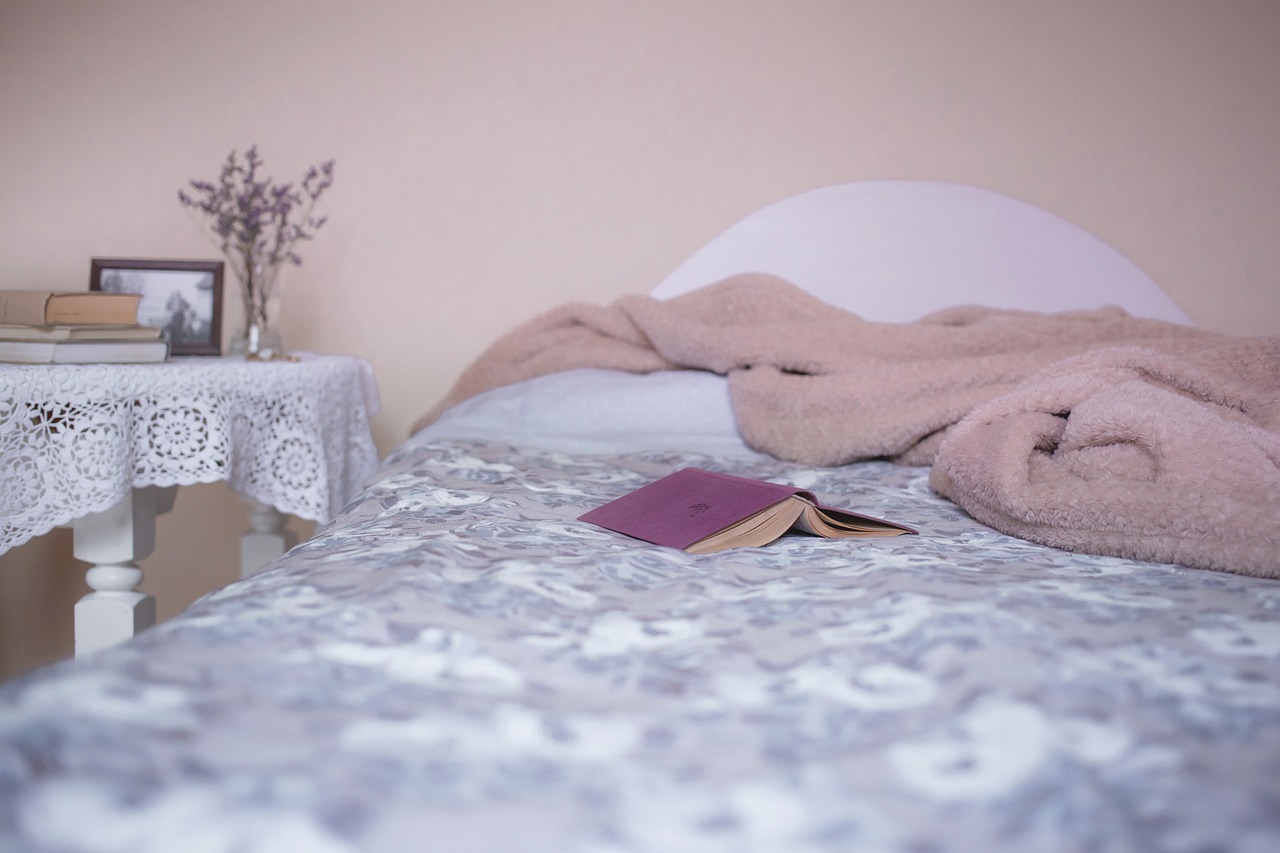
Nostalgic Appeal
Vintage bedrooms evoke a sense of nostalgia, taking you back to a bygone era with elements from the past.
Vintage bedrooms are like a time machine, whisking you away to a bygone era filled with charm and character. They offer a unique opportunity to infuse your space with the elegance and style of yesteryears, creating a room that feels both timeless and personal.
1. Antique Furniture: The heart of a vintage bedroom often lies in its choice of furniture. Opt for antique or vintage pieces, such as a beautifully crafted four-poster bed, a distressed wooden dresser or an ornate vanity with a matching stool. These pieces not only add historical authenticity but also serve as functional works of art, enhancing the room’s overall aesthetic.
2. Vintage Textiles: Bedding and textiles play a crucial role in achieving a vintage look. Consider using heirloom quilts, crocheted throws or lace curtains to evoke a sense of nostalgia. Vintage-inspired patterns, like florals, stripes or damask, can be incorporated into pillows, bedspreads and upholstery for an extra dose of vintage charm.
3. Timeless Color Palette: Vintage bedrooms often feature soft, muted color palettes reminiscent of the past. Think about using colors like pastel blues, gentle pinks or faded greens to create a serene and dreamy atmosphere. A subtle, aged patina on the walls can add a sense of history to the room.
4. Vintage Decor: Accessories and decor pieces are the finishing touches that bring the vintage look together. Hunt for antique mirrors, old-fashioned alarm clocks and vintage wall art. Incorporate classic elements like crystal chandeliers, porcelain figurines or a collection of vintage books to infuse your room with character and history.
5. Repurposed Finds: Get creative with repurposed items that breathe new life into vintage treasures. An old wooden ladder can become a unique shelving unit and vintage suitcases can be stacked to form a charming nightstand. These inventive touches add an extra layer of personality to your vintage haven.
6. Personalization: While a vintage bedroom draws inspiration from the past, it should also reflect your individual style and personality. Mix and match elements from different eras or incorporate modern conveniences like a comfortable mattress or contemporary lighting to ensure your space remains both functional and personal.
A vintage bedroom isn’t just a room; it’s a journey through time, where each piece tells a story and where nostalgia mingles with comfort and style. By carefully curating your vintage decor and personalizing it to your tastes, you can create a bedroom that not only transports you to another era but also provides a cozy and inviting retreat that feels uniquely yours.
You can also read more about this here: From Retro to Modern: Analysing the Revival of Vintage Design …
Antique Furniture
Classic wooden furniture, ornate frames and vintage decor items define this style.
The hallmark of this style lies in its timeless elegance and refined aesthetics, which are achieved through classic wooden furniture, ornate frames and vintage decor items. Let’s delve deeper into what makes this design approach so distinctive:
Timeless Wooden Furniture: At the heart of this style are the classic wooden furniture pieces. Think of rich mahogany, oak or cherry wood with exquisite craftsmanship. These pieces exude warmth and durability while evoking a sense of nostalgia.
Ornate Frames and Molding: Elaborate detailing is a key feature. Furniture and decor items often boast intricate carvings, ornate frames and decorative molding. These elements add an air of sophistication and history to the space.
Vintage Decor Items: Vintage decor items play a crucial role in defining the style. Antique vases, old-world clocks, vintage mirrors and collectibles from bygone eras serve as focal points and conversation starters.
Classic Color Palette: A classic color palette often includes warm, neutral tones like ivory, beige, taupe and muted shades of pastels. These colors provide a timeless backdrop that allows the ornate furniture and decor to shine.
Luxurious Textiles: Luxurious textiles complete the look. Velvet upholstery, silk curtains and brocade fabrics add a touch of opulence and tactile comfort to the space.
Symmetry and Balance: Achieving symmetry and balance in the arrangement of furniture and decor is a fundamental principle. Symmetrical layouts with matching pairs of furniture and decor items create a sense of order and elegance.
Chandeliers and Crystal Lighting: Lighting fixtures are often grand and opulent. Crystal chandeliers with multiple arms and intricate details are a common choice, casting a warm and inviting glow.
Artwork and Portraits: Framed artwork, especially portraits of ancestors or vintage landscapes, contributes to the nostalgic charm. These pieces often serve as a link to the past and add a personal touch to the decor.
Antique Rugs and Carpets: Antique rugs with intricate patterns and a patina of age are frequently used to define and delineate spaces within the room. They add warmth underfoot and a sense of history to the room.
Display Cabinets and Curios: Display cabinets with glass doors are perfect for showcasing vintage china, porcelain figurines or other collectibles. These cabinets serve as both storage and a visual focal point.
Refined Accents: Refined accents like gilded mirrors, tassels and decorative pillows with intricate embroidery are used to embellish furniture and decor, elevating the overall look.
Subdued Florals and Patterns: Subdued floral and damask patterns on upholstery, curtains and wallpaper contribute to the classic aesthetic without overwhelming the space.
Family Heirlooms: Incorporating family heirlooms or antique pieces passed down through generations adds a deeply personal and sentimental layer to the decor.
Elegance in Simplicity: While ornate details are prevalent, simplicity is also valued. A few carefully chosen, high-quality pieces can make a statement without overwhelming the space.
In summary, this design style is a celebration of craftsmanship, history and sophistication. It captures the essence of a bygone era while remaining timeless and inviting. Classic wooden furniture, ornate detailing and vintage decor items work in harmony to create a space that is not just beautifully furnished but also steeped in character and tradition.
To expand your knowledge on this subject, make sure to read on at this location: Recognizable designer aesthetics and how to define your home …
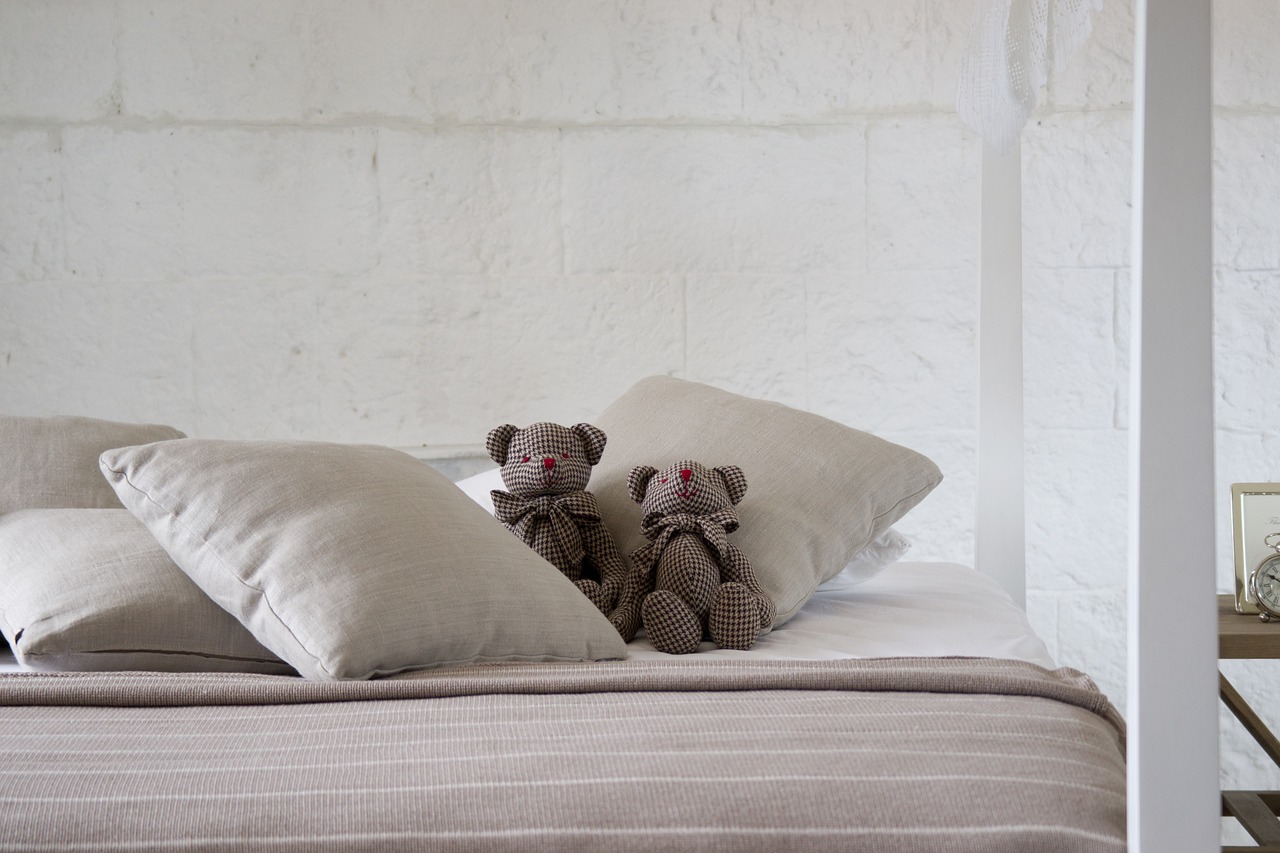
Soft Color Palettes
Vintage bedrooms often feature soft, muted color schemes with pastel hues and floral patterns.
Embracing a vintage aesthetic in your bedroom can transport you to a bygone era of charm and nostalgia. Here’s an extended exploration of vintage bedroom design, with a focus on color schemes and patterns:
Pastel Palette: Vintage bedrooms are known for their gentle and soothing color palettes. Pastel hues like powder blue, mint green, blush pink and lavender are perfect choices for creating that soft, inviting ambiance. These colors evoke a sense of serenity and timelessness.
Neutral Foundations: Consider using neutral shades like creamy white, ivory or soft beige as the foundation of your vintage bedroom. These colors provide a clean backdrop that allows pastels and patterns to shine while adding a touch of sophistication.
Floral Romance: Floral patterns are a quintessential element of vintage bedroom decor. Incorporate floral motifs through your bedding, curtains, wallpaper or upholstery. You can choose from delicate, ditsy florals for a cottage-inspired look or larger, bolder blooms for a more dramatic effect.
Mix and Match: Vintage decor often thrives on a mix-and-match approach. Don’t hesitate to blend different pastel colors and floral patterns to create an eclectic and visually engaging space. For instance, layer floral throw pillows on pastel bedding for a charming contrast.
Antique Furniture: Consider incorporating antique or vintage-inspired furniture pieces to anchor your bedroom’s design. A beautifully crafted wooden bedframe, a vanity with ornate detailing or a vintage dressing table can be focal points that exude old-world charm.
Distressed Finishes: Furniture with distressed or weathered finishes adds authenticity to your vintage bedroom. These finishes give the impression of well-loved heirloom pieces that have stood the test of time.
Lace and Crochet: Enhance the vintage appeal by introducing lace or crochet elements. Use lace curtains, doilies or tablecloths to infuse a touch of delicate femininity into your decor.
Vintage Lighting: Seek out vintage-style lighting fixtures like chandeliers with crystal or glass accents, ornate wall sconces or table lamps with intricate bases. These pieces can serve as both functional and decorative elements.
Accessorize Thoughtfully: Vintage accessories play a pivotal role in capturing the essence of a bygone era. Antique mirrors, framed vintage photographs, vintage-style alarm clocks and porcelain figurines can all add character to your space.
Layered Textures: Incorporate a variety of textures to create depth and warmth in your vintage bedroom. Add plush throw blankets, satin or velvet cushions and an area rug with a vintage-inspired design to create a tactile and cozy atmosphere.
Simplicity and Elegance: While vintage decor can be eclectic and layered, strive for a balance between simplicity and elegance. Avoid overcrowding your space with too many decor items, allowing each piece to shine.
Personal Touches: Infuse your personality into your vintage bedroom by incorporating personal mementos, heirlooms or antique finds that have sentimental value. These items can make your space feel even more authentic and meaningful.
Creating a vintage-inspired bedroom is a wonderful way to infuse your living space with a timeless and romantic charm. Whether you opt for a shabby chic cottage style or a more opulent Victorian look, your vintage bedroom can become a tranquil retreat where you can unwind and relish the classic beauty of the past.
Looking for more insights? You’ll find them right here in our extended coverage: 75+ Farmhouse Bedroom Ideas for 2023 | Pictures & Design Tips
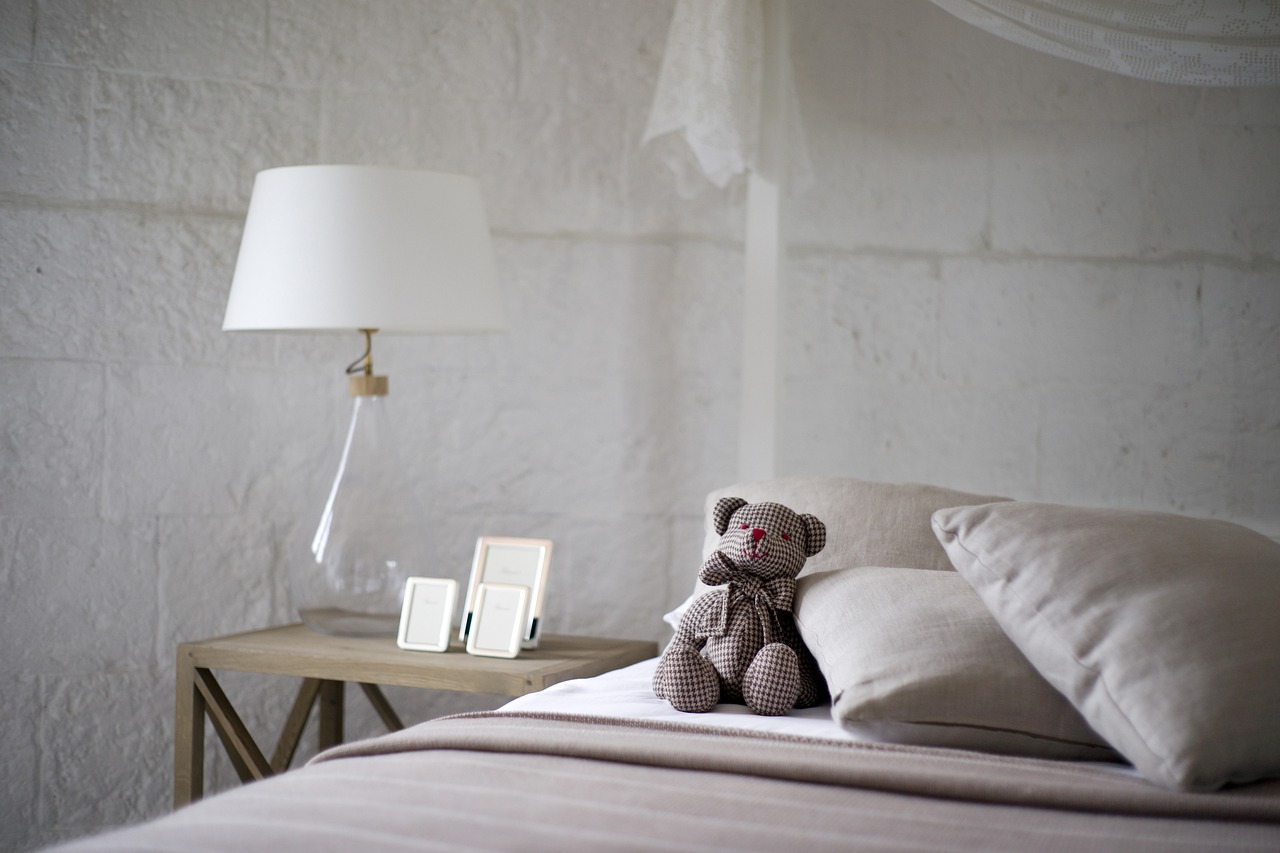
Eclectic Decor
Mixing and matching different styles and eras is common in vintage design, creating an eclectic and charming ambiance.
Incorporating a mix of various styles and eras into vintage design is not just common; it’s one of the key principles that gives this aesthetic its unique and captivating character. Embracing this eclectic approach allows you to curate a space filled with charm and personality. Let’s delve deeper into the concept of mixing and matching in vintage design and explore how it can transform your living spaces:
1. Eclectic Fusion:
By blending different styles and eras, you create a captivating fusion that celebrates the diversity of design history. Pairing a mid-century modern coffee table with Victorian-inspired upholstery, for example, can result in a visually stimulating and harmonious composition.
2. Personal Expression:
Mixing and matching in vintage design is an opportunity to express your personal style and preferences. It allows you to curate a space that tells a story about your tastes, interests and the pieces you’ve collected over time. Each item contributes to the narrative of your home.
3. Timeless Appeal:
Vintage design is timeless because it transcends the confines of any single era or style. It draws inspiration from the past while remaining relevant in the present. This versatility allows you to incorporate pieces that resonate with you personally, regardless of their specific time period.
4. Sustainability and Upcycling:
Mixing different vintage styles is environmentally friendly as it promotes sustainability and upcycling. By repurposing and reimagining furniture and decor items from various eras, you contribute to reducing waste and conserving resources.
5. Layered Textures and Colors:
Vintage design thrives on layers of textures and colors. Experimenting with textiles, finishes and materials from different periods can add depth and warmth to your space. Layering rugs, using contrasting fabric patterns and combining wood tones are all techniques that enrich the visual appeal.
6. Unexpected Combinations:
The beauty of vintage design lies in the unexpected combinations that emerge. It encourages you to think outside the box and embrace the juxtaposition of seemingly contrasting elements. These unexpected pairings often result in unique and eye-catching interiors.
7. Treasure Hunts:
Shopping for vintage pieces can be an exciting treasure hunt. Scouring flea markets, antique stores and online marketplaces for distinctive finds is an adventure in itself. Each piece you discover adds a sense of intrigue and history to your home.
8. Balance and Cohesion:
While vintage design celebrates diversity, it’s important to maintain a sense of balance and cohesion in your space. You can achieve this by selecting a unifying color palette, creating focal points and allowing certain pieces to shine while others play supporting roles.
9. Room for Personal Interpretation:
Vintage design is not prescriptive; it allows room for personal interpretation and creativity. Your vintage-inspired space should reflect your unique personality and lifestyle, so don’t be afraid to mix and match in a way that feels authentic to you.
In summary, mixing and matching different styles and eras in vintage design is a dynamic and rewarding approach to interior decor. It allows you to craft a living space that is not only aesthetically captivating but also rich with character and personal meaning. By embracing the eclectic, you can create an environment that tells a story, celebrates the past and resonates with your present-day sensibilities.
For additional details, consider exploring the related content available here Interior Design Styles 101: The Ultimate Guide To Defining Decorating

Textured Fabrics
Plush velvet, lace and embroidered textiles add richness and texture to vintage spaces.
Incorporating plush velvet, delicate lace and intricately embroidered textiles into your vintage-themed decor can truly elevate the richness and texture of your space. Here’s how these materials can enhance the charm and elegance of vintage interiors:
Velvet Elegance: Plush velvet exudes luxury and sophistication. Consider using velvet upholstery on vintage-inspired furniture pieces like sofas, armchairs or ottomans. The tactile softness of velvet not only adds comfort but also creates a sense of opulence that complements vintage aesthetics.
Lace Accents: Lace is synonymous with vintage romance. Incorporate lace curtains, tablecloths or doilies into your decor to infuse a touch of timeless elegance. The delicate patterns of lace can soften the overall look of a room and evoke a sense of nostalgia.
Embroidered Textiles: Intricately embroidered textiles, such as throw pillows, table runners or even wall hangings, can become focal points in your vintage-inspired space. These pieces often feature ornate designs and fine craftsmanship that capture the essence of bygone eras.
Layering and Mixing: Don’t hesitate to layer these textiles to create depth and complexity in your decor. A velvet-upholstered chair paired with lace curtains and embroidered cushions can harmoniously blend textures and evoke a sense of vintage opulence.
Antique Furniture: To complete the vintage look, consider incorporating antique or vintage furniture pieces. Richly upholstered chairs or ornate wooden tables can seamlessly integrate with plush velvet, lace and embroidered textiles, enhancing the overall ambiance.
Color Palette: Pay attention to the color palette when using these textiles. Vintage-inspired colors like deep jewel tones, muted pastels and earthy neutrals work well with plush velvet and lace. Choose hues that resonate with the era you’re drawing inspiration from.
Accessories and Details: Vintage-style decor is all about the small details. Use vintage-inspired accessories like porcelain teacups, ornate picture frames or crystal chandeliers to complete the look. These details add character and authenticity to your vintage space.
Mix Eras: While creating a vintage-inspired space, you don’t have to limit yourself to a single era. Mix and match elements from different time periods to create a unique blend of vintage aesthetics that reflects your personal style.
Care and Maintenance: Keep in mind that these textiles may require special care. Velvet can benefit from occasional brushing to maintain its plushness, while lace and embroidered textiles may need gentle hand washing or dry cleaning to preserve their delicate beauty.
Personal Touch: Ultimately, your vintage-inspired space should reflect your personal taste and memories. Incorporate family heirlooms, vintage finds or handmade pieces to add a personal touch that makes the space uniquely yours.
Incorporating plush velvet, lace and embroidered textiles into your vintage decor can transport you to a bygone era while creating a warm and inviting atmosphere. These materials not only add richness and texture but also tell a story of timeless elegance and craftsmanship that is sure to captivate anyone who enters your vintage-inspired haven.
For a comprehensive look at this subject, we invite you to read more on this dedicated page: Roman Shades | Custom Shades – Hunter Douglas

Timeless Elegance
Vintage design stands the test of time, maintaining its appeal for generations.
Vintage design is a timeless aesthetic that transcends the trends of the moment. It stands as a testament to enduring style and has the remarkable ability to capture the hearts and imaginations of not just one, but multiple generations. Here’s why vintage design remains eternally appealing:
1. Nostalgic Charm: Vintage design evokes a sense of nostalgia, transporting us to different eras and evoking memories of the past. Whether it’s the sleek lines of mid-century modern furniture, the ornate detailing of Victorian decor or the vibrant colors of the 1970s, vintage design allows us to relive the charm and character of bygone times.
2. Time-Tested Quality: Many vintage pieces were crafted with a level of craftsmanship and attention to detail that is often unmatched in today’s mass-produced world. The enduring quality of these items not only preserves their functionality but also ensures their longevity.
3. Sustainability: Embracing vintage design aligns with sustainability principles. By repurposing and reusing vintage items, we reduce the demand for new production, minimizing the environmental impact of the manufacturing process. Vintage design encourages a more eco-conscious approach to decorating.
4. Unique Character: Vintage pieces often bear the marks of their history, such as patina, wear or unique imperfections. These characteristics give each item a distinctive personality and story, making it all the more captivating and cherished.
5. Design Inspirations: Vintage design serves as a rich source of inspiration for contemporary designers and artists. Elements from the past frequently find their way into modern aesthetics, creating a fusion of old and new that keeps vintage design relevant and fresh.
6. Versatility: Vintage design is incredibly versatile. It can be integrated into a wide range of decor styles, from eclectic and bohemian to minimalist and industrial. Whether you’re looking to create a cozy, retro-inspired nook or add a touch of vintage elegance to a contemporary space, vintage pieces can be seamlessly incorporated.
7. Emotional Connection: Vintage items often hold a sentimental value that transcends their physical appearance. They may have been passed down through generations, reminding us of our family history and heritage. These emotional connections add depth and significance to vintage design.
8. Investment: Vintage pieces, particularly those from renowned designers or iconic eras, can appreciate in value over time. Investing in vintage design not only enhances your living space but can also prove to be a wise financial decision.
In essence, vintage design isn’t just about the aesthetics; it’s a celebration of history, craftsmanship and the enduring appeal of beauty through the ages. It’s a testament to the idea that true style knows no expiration date and that the allure of vintage design will continue to captivate hearts and homes for generations to come.
For a comprehensive look at this subject, we invite you to read more on this dedicated page: Vintage Interior Design | How To Create Beautiful Vintage Interiors

Cozy Atmosphere
The warm, inviting feel of vintage bedrooms makes them ideal for relaxation and comfort.
The warm, inviting feel of vintage bedrooms makes them ideal for relaxation and comfort. These charming spaces, steeped in history and character, have a timeless appeal that can transport you to a bygone era. Here’s an extended idea on why vintage bedrooms are perfect sanctuaries for unwinding and finding solace:
Nostalgia and Sentiment: Vintage bedrooms often feature furniture, decor and textiles from a past era, evoking feelings of nostalgia and sentiment. Whether it’s a cherished family heirloom or a flea market find, each piece has a story to tell. This connection to the past can create a deep sense of comfort and emotional resonance.
Timeless Elegance: Vintage aesthetics are characterized by timeless elegance and a sense of refinement. Intricate detailing, craftsmanship and quality materials are hallmarks of vintage furniture and decor. These elements lend an air of sophistication to the bedroom, making it a place where you can truly feel pampered.
Comforting Color Palettes: Vintage bedrooms often feature soft and comforting color palettes. Pastel shades, muted tones and gentle hues contribute to a soothing atmosphere. These colors can promote relaxation and a sense of tranquility, making it easier to unwind after a long day.
Cozy and Inviting Textures: Vintage bedrooms are known for their use of cozy and inviting textures. Plush upholstery, silk drapes, lace accents and hand-knitted blankets create a tactile experience that encourages relaxation. You can sink into the softness and enjoy a sense of physical comfort.
Mixed and Matched Decor: Vintage bedrooms embrace the art of mixing and matching. Eclectic combinations of furniture styles, patterns and eras can create a visually interesting and personalized space. This flexibility allows you to curate a bedroom that reflects your unique tastes and preferences.
Natural Materials: Vintage decor often features natural materials like wood, wicker and brass. These materials add warmth and a connection to the natural world, enhancing the cozy and comforting ambiance of the bedroom.
Unique Finds: Vintage bedrooms are treasure troves of unique finds. Whether it’s an antique vanity, a weathered dresser with character or a charming chandelier, these distinctive pieces can make your bedroom feel like a curated sanctuary of one-of-a-kind treasures.
Sense of History: Vintage bedrooms have a sense of history embedded in their design. Sleeping in a vintage bedroom can feel like you’re sharing the space with the generations that came before. This connection to the past can add depth and a sense of continuity to your life.
Personalized Retreat: Vintage bedrooms offer opportunities for personalization. You can mix in family heirlooms, flea market discoveries or DIY projects to create a bedroom that truly reflects your personality and style. It’s a space that’s uniquely yours.
Escape from Modernity: In a world filled with technology and fast-paced living, vintage bedrooms provide a retreat from modernity. They encourage you to slow down, unplug and savor the simple pleasures of life, like reading a book by soft lamplight or enjoying a cup of tea in a cozy nook.
In summary, vintage bedrooms have an innate ability to soothe the soul and provide a haven of relaxation and comfort. They blend the charm of the past with the comforts of the present, offering a timeless and inviting atmosphere that welcomes you to unwind, dream and find solace in the embrace of history and nostalgia.
Should you desire more in-depth information, it’s available for your perusal on this page: 75+ Farmhouse Bedroom Ideas for 2023 | Pictures & Design Tips
Personal Story
Incorporating family heirlooms or thrifted finds adds a personal touch and a sense of history to the space.
Incorporating family heirlooms or thrifted finds adds a personal touch and a sense of history to the space. These cherished pieces not only tell a story but also infuse your environment with nostalgia and uniqueness.
Family heirlooms, whether it’s an antique dresser passed down through generations or a vintage photograph in a beautiful frame, can serve as focal points that reflect your heritage and familial bonds. On the other hand, thrifted finds, such as a well-loved armchair or a rustic coffee table, can add character and personality to your space while being environmentally conscious and budget-friendly.
Integrating these treasures into your decor allows you to preserve memories and traditions, making your home a true reflection of you and your loved ones. Embrace the beauty of the past as you design your living space, creating a warm and inviting environment that feels both familiar and uniquely yours.
Additionally, you can find further information on this topic by visiting this page: 10 Most Popular Interior Design Styles to Know Now | Architectural …
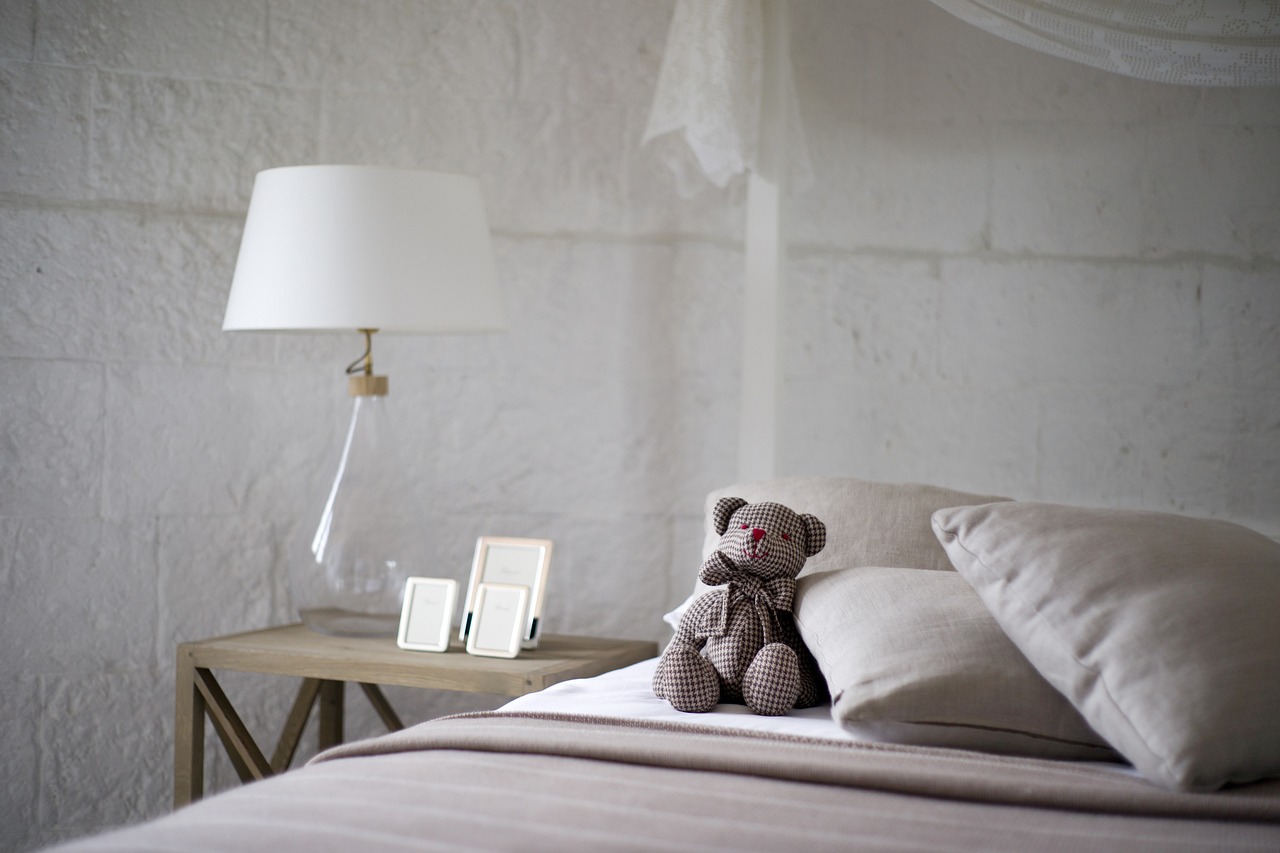
Sustainability
Embracing vintage decor promotes sustainability by reusing and repurposing existing items.
Embracing vintage decor not only adds character and charm to your living space but also aligns with the principles of sustainability and conscious consumption. It’s a design choice that goes beyond aesthetics; it’s a commitment to reducing waste and preserving the environment. Here’s how:
Reduces Landfill Waste: Opting for vintage decor means you’re diverting items from landfills. Instead of contributing to the disposal of old furniture and accessories, you’re giving them a new lease on life. This reduces the environmental impact of manufacturing new goods and helps reduce the burden on waste disposal systems.
Supports Eco-Friendly Practices: Vintage items were often crafted in an era when durability and quality were prioritized. By incorporating these pieces into your decor, you’re supporting eco-friendly practices that emphasize longevity over planned obsolescence. Vintage furniture and decor are built to withstand the test of time, reducing the need for frequent replacements.
Preserves Resources: The production of new furniture and decor often involves the extraction of natural resources, energy consumption and carbon emissions. By choosing vintage items, you’re minimizing the demand for these resources and contributing to the preservation of our planet’s finite materials.
Unique and Personalized Spaces: Vintage decor allows you to create unique, one-of-a-kind spaces that reflect your personality and style. Each vintage piece has a history and story to tell, adding depth and character to your interior design. Your home becomes a curated collection of pieces that resonate with you, rather than a cookie-cutter showroom.
Reduces Carbon Footprint: The transportation of new furniture and decor items can contribute to a significant carbon footprint. In contrast, vintage items are often found locally or can be sourced without extensive shipping, reducing the environmental impact associated with long-distance transportation.
Encourages Repair and Upcycling: Vintage items may require some restoration or upcycling to fit seamlessly into your decor. This encourages creativity and DIY projects, as you breathe new life into old pieces. Repairing and upcycling not only save money but also promote resourcefulness and reduce waste.
Timeless Appeal: Vintage decor items often have a timeless appeal that transcends passing trends. They can seamlessly blend with both contemporary and traditional design styles, offering versatility and longevity in your decor choices.
By embracing vintage decor, you’re not only creating a visually captivating and unique home but also contributing to a more sustainable and eco-conscious lifestyle. It’s a choice that combines aesthetics with ethics, making your space more environmentally friendly and showcasing your commitment to a greener, more responsible way of living.
You can also read more about this here: Top Interior Design Trends for Modern Homeowners

Limited Availability
Finding authentic vintage pieces can be challenging and may require extensive searching.
Discovering authentic vintage pieces for your home can indeed be a rewarding but challenging endeavor that often demands patience and persistence. This quest for unique treasures from the past takes you on a journey through time, offering you the opportunity to bring a touch of history and character into your living space.
Exploring Antique Shops: One of the classic avenues for finding authentic vintage pieces is to visit antique shops, which are like treasure troves of bygone eras. Browsing through these establishments can be an adventure in itself, as you never know what rare gem you might stumble upon. From vintage furniture to old-fashioned decor items, antique shops offer a diverse range of options to explore.
Estate Sales and Auctions: Estate sales and auctions are excellent places to unearth hidden treasures. These events often feature entire collections of vintage items from a single household, including furniture, artwork and unique collectibles. Attending these sales can be both exciting and competitive, as you may be bidding against fellow enthusiasts for coveted pieces.
Online Marketplaces: The digital age has made vintage hunting more accessible than ever. Online marketplaces, such as eBay, Etsy and specialty vintage shops, offer a vast array of vintage items from all over the world. You can refine your search based on specific eras, styles or categories, making it easier to find precisely what you’re looking for. However, due diligence is essential when shopping online to ensure the authenticity of the pieces.
Local Flea Markets and Yard Sales: Flea markets and yard sales are often treasure troves of vintage discoveries, offering a more relaxed and casual shopping experience. These gatherings can yield unexpected finds at reasonable prices. While it may require some early morning outings and haggling skills, the thrill of finding a unique vintage piece makes it all worthwhile.
Networking and Collecting Communities: Joining vintage collecting communities and networking with fellow enthusiasts can be invaluable. These communities often share tips, insights and sources for locating authentic vintage items. Building relationships with individuals who share your passion can lead to valuable connections and recommendations for reliable sellers.
Antique Fairs and Shows: Antique fairs and shows provide an opportunity to immerse yourself in a world of vintage wonders. These events gather dealers and collectors in one place, showcasing an impressive array of vintage goods. Attending these fairs can be both educational and enjoyable, as you can learn more about the history and value of the pieces you’re interested in.
While the journey to find authentic vintage pieces may be filled with challenges and require dedicated effort, the rewards are immeasurable. Each vintage item tells a story, carries a sense of nostalgia and adds a layer of authenticity to your home decor that cannot be replicated by modern mass-produced items. So, embrace the thrill of the hunt and as you uncover these timeless treasures, you’ll infuse your living space with character and history, creating a home that is truly one of a kind.
You can also read more about this here: The Vintage Proportions in Modern Ceiling Design: Exploring the …

Space Constraints
Vintage furniture tends to be bulkier, which might not suit small bedrooms.
Indeed, vintage furniture often boasts a sense of timeless charm and craftsmanship that is hard to replicate. However, when it comes to small bedrooms, there are some considerations to keep in mind when incorporating vintage pieces. Let’s explore this idea further:
Space Optimization: Small bedrooms require a keen eye for space optimization. Vintage furniture, with its bulkier and sometimes ornate designs, can consume valuable floor space quickly. To make vintage pieces work in a compact room, consider choosing smaller-scale vintage items, like a petite bedside table or a slim, elegant vanity.
Multi-Functional Pieces: Look for vintage furniture that serves multiple functions. For example, a vintage trunk or cedar chest can double as both a charming decor piece and a storage solution. A vintage writing desk with built-in drawers can serve as a workspace and a storage unit.
Lighter Colors and Materials: Vintage furniture often features dark wood tones, which can make a small bedroom feel even smaller. To counteract this, consider pieces with lighter wood finishes or even painted vintage furniture in soft, neutral colors. Lighter hues create an illusion of spaciousness and airiness.
Open Shelving: Vintage shelving units with open designs can be a great choice for small bedrooms. They provide storage space without creating a closed-off feeling. These units can display books, decorative items or even clothing in a way that adds personality and doesn’t overwhelm the room.
Furniture with Legs: Vintage furniture with visible legs can give the illusion of more floor space because it allows light to flow underneath. This can make your small bedroom feel less cramped. Look for vintage dressers, nightstands or tables with this feature.
Mirrors and Reflective Surfaces: Vintage mirrors, especially those with intricate frames, can serve a dual purpose. They add a touch of vintage charm while also reflecting light and making the room appear larger. Placing vintage mirrors strategically can amplify this effect.
Mixing Styles: Don’t feel limited to using exclusively vintage furniture. Mixing vintage and modern pieces can create an eclectic and visually interesting bedroom. Choose vintage items that truly resonate with your style and complement them with modern furniture that maximizes space efficiency.
Customization: Consider having vintage furniture pieces restored or customized to better suit your small bedroom’s dimensions and needs. Professional furniture restoration can modify vintage pieces to be more space-efficient while preserving their unique character.
Vertical Storage: Utilize vertical space effectively. Vintage armoires or tall wardrobes can provide ample storage without taking up excessive floor space. Look for vintage pieces with multiple drawers and shelves to make the most of height.
Minimalism and Decluttering: Keep the overall design of your small bedroom clean and uncluttered. Vintage furniture should complement the space rather than overwhelm it. Regularly declutter your bedroom to maintain a sense of spaciousness.
Incorporating vintage furniture into a small bedroom requires thoughtful selection and arrangement. By choosing the right pieces, optimizing space and considering the overall design, you can successfully blend vintage charm with modern functionality, creating a cozy and inviting bedroom retreat that celebrates the beauty of both the past and the present.
Explore this link for a more extensive examination of the topic: What-Not Furniture | Storables
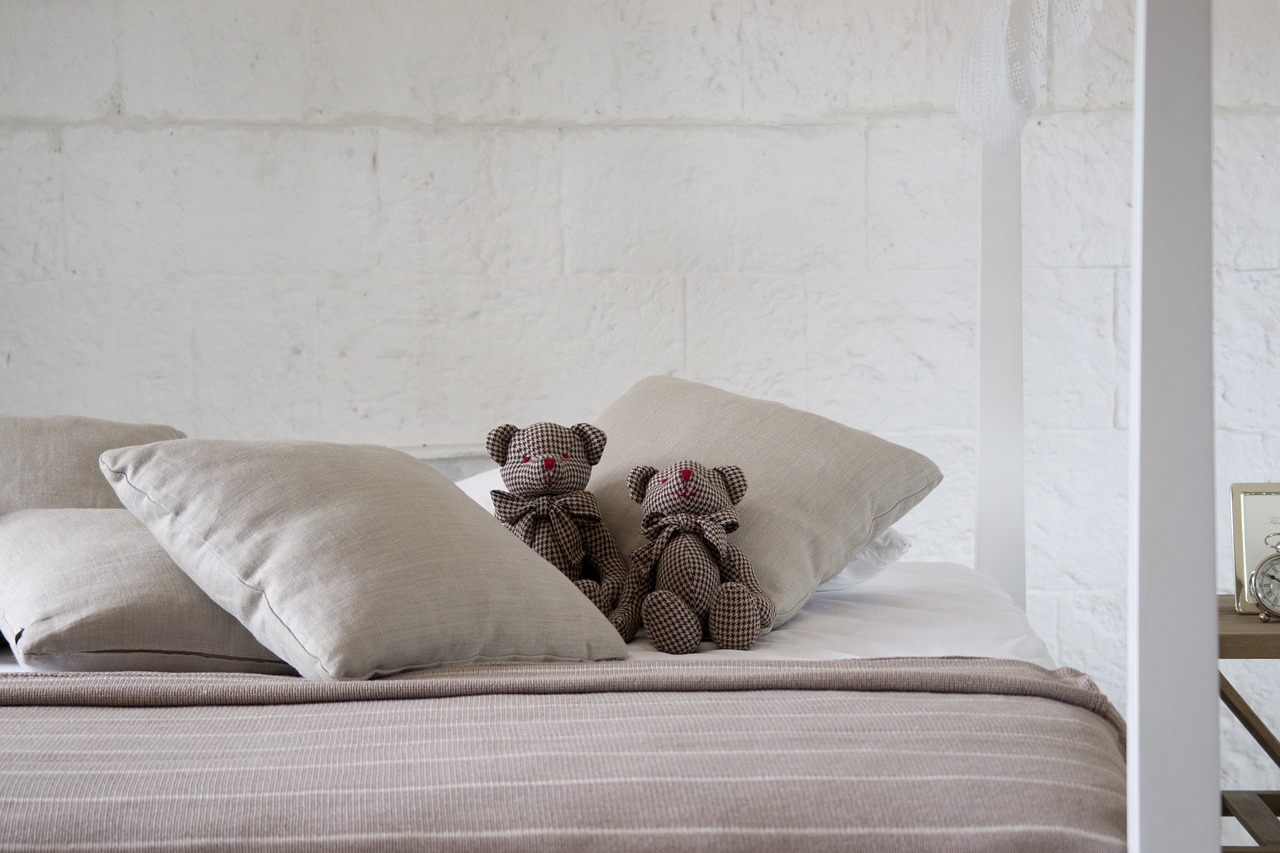
Maintenance
Antique items may require more care and maintenance to preserve their condition.
Antique items are not just possessions; they are pieces of history and craftsmanship that deserve special attention and care. Here’s why antique items often require more care and maintenance to ensure their preservation:
Age and Fragility: Antiques have typically been around for decades, if not centuries. Over time, natural wear and tear occur. These items can become fragile, with materials like wood, fabric or paper becoming more delicate. Extra care is needed to prevent further deterioration.
Sensitivity to Environmental Factors: Antiques are often sensitive to changes in temperature, humidity and light. Extreme conditions can lead to warping, fading or cracking. Maintaining stable environmental conditions is crucial to their preservation.
Dust and Grime: Antiques can collect dust and grime over the years. Cleaning them requires a gentle touch to avoid causing damage. Specialized cleaning methods and materials may be necessary to remove dirt without harming the item’s surface.
Restoration Needs: Many antiques may require restoration work to address existing damage or wear. This process should be carried out by skilled professionals who understand the intricacies of preserving historical pieces while maintaining their value.
Protection from Pests: Antiques can attract pests like moths or beetles, especially if they contain natural materials like wood or textiles. Regular inspection and preventive measures such as using protective covers or pest deterrents are essential.
Display Considerations: How you display an antique can impact its condition. Using the right type of shelving, avoiding direct sunlight and arranging items to minimize contact with each other are all part of preserving antiques.
Documentation and Records: Keeping detailed records of an antique’s history, including its provenance and any restoration work, is vital. This documentation can increase its value and help future owners understand its significance.
Periodic Appraisals: Periodic appraisals by qualified experts can help you understand the current value of your antique items. This information is crucial for insurance purposes and can guide your preservation efforts.
Conservation Ethics: When caring for antiques, it’s important to adhere to conservation ethics. This means preserving the item’s historical and artistic value rather than trying to make it look new. Over-restoration or improper care can diminish an antique’s authenticity and worth.
Love and Respect: Ultimately, antiques require care and attention because they hold historical, cultural or sentimental value. The effort put into their preservation is a testament to our appreciation for the past and our commitment to passing down these treasures to future generations.
In conclusion, antique items are precious relics that offer a connection to the past. While they may demand extra care and maintenance, the rewards of preserving their beauty, historical significance and cultural value make the effort well worth it. By taking the necessary steps to protect and care for antiques, we ensure that their legacy endures for generations to come.
Explore this link for a more extensive examination of the topic: 100 Modern Fireplace Ideas to Inspire Your Next Home Redesign

Minimalist Aesthetics
Modern bedrooms favor clean lines, simplicity and minimal ornamentation.
Certainly, here’s an extended idea:
“In the realm of interior design, modern bedrooms have carved out a distinct niche characterized by their preference for clean lines, simplicity and minimal ornamentation. This design philosophy not only embodies a sleek and contemporary aesthetic but also promotes a sense of tranquility and functionality within the bedroom space.
Clean lines are the hallmark of modern bedroom design. The furniture, architecture and decor elements all feature straight, uncluttered lines that create a sense of order and balance. This design principle often extends to the layout of the room, with an emphasis on symmetry and geometric precision. The absence of intricate detailing and excessive ornamentation allows the eye to move freely throughout the space, creating a sense of openness and calm.
Simplicity is a key guiding principle in modern bedroom design. This means that every element in the room serves a purpose and contributes to the overall functionality and aesthetics. Furniture pieces are often chosen for their form and function, with a focus on practicality and comfort. Unnecessary clutter is minimized and personal belongings are carefully curated to maintain a sense of minimalism.
Minimal ornamentation is another defining feature of modern bedrooms. Instead of ornate patterns and elaborate decor, modern design often leans towards a more restrained approach. A neutral color palette is frequently used, with an occasional pop of color or texture for visual interest. The use of materials like glass, metal and wood in their raw and unadorned states adds a touch of sophistication without overwhelming the space.
The simplicity and minimalism of modern bedrooms have practical benefits beyond aesthetics. A clutter-free environment promotes mental clarity and reduces stress, creating a serene atmosphere that’s conducive to relaxation and sleep. The absence of unnecessary distractions allows the mind to unwind, making it easier to transition into a restful state.
Furthermore, modern bedrooms are versatile and adaptable, making them well-suited to various lifestyles and needs. The clean and uncluttered design allows for easy customization and personalization. You can introduce elements that reflect your individual taste and personality, whether it’s through the choice of artwork, textiles or accent pieces. This flexibility ensures that your modern bedroom remains a reflection of your unique style while adhering to its core principles of simplicity and minimalism.
In summary, modern bedrooms represent a design philosophy that values clean lines, simplicity and minimal ornamentation. They offer a serene and functional space where form meets function, creating a harmonious environment that promotes relaxation and tranquility. Whether you prefer a monochromatic color scheme or an injection of vibrant hues, modern design provides a versatile canvas to express your personal style within its sleek and minimal framework.”
You can also read more about this here: Flower Market Posters, Minimalist Flower Market Wall … – Amazon.com
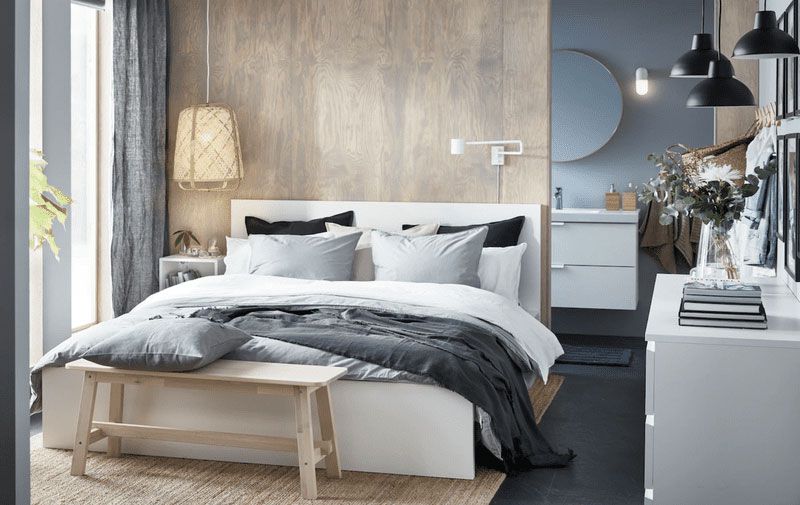
Sleek Materials
Furniture and decor in modern design often feature materials like glass, steel and polished wood.
In the world of modern interior design, the mantra is all about sleek simplicity and embracing the “less is more” philosophy. The choice of materials plays a pivotal role in achieving this contemporary aesthetic and some of the most popular materials in modern design include glass, steel and polished wood. Let’s explore how these materials contribute to the modern design ethos:
1. Glass: Glass is a hallmark of modern design, thanks to its transparency and ability to create an open, airy feel in a space. Large windows and glass doors are common features, allowing an abundance of natural light to flood the room. Glass coffee tables and dining tables offer a sense of lightness and visual continuity, making them ideal for smaller spaces. Glass can also be used for sleek shelving or as a partition, adding functionality without sacrificing aesthetics.
2. Steel: Steel is the backbone of modern design, both for its structural integrity and its industrial-chic aesthetic. It’s often used for furniture frames, legs and accents. Steel dining chairs, barstools and even bed frames impart a sense of durability and modernity. Steel can be left in its raw form for an industrial look or finished with various coatings, such as matte black or brushed nickel, to suit the design’s color scheme.
3. Polished Wood: While modern design tends to embrace clean lines and minimalism, wood adds warmth and a touch of nature to balance the coolness of glass and steel. Polished wood is a favorite for modern furniture, like dining tables, chairs and cabinets. Woods like walnut and oak, when finished to a smooth, glossy surface, exude sophistication and craftsmanship. Wood can also be used for flooring, accent walls or floating shelves, providing both functionality and aesthetics.
4. Leather and Upholstery: To soften the sometimes stark look of glass, steel and wood, modern design often incorporates leather and upholstery for comfort and texture. Leather sofas and chairs, in neutral tones like black, white or gray, add a luxurious touch. Upholstered headboards or dining chairs introduce softness and a hint of color, offering a pleasing contrast to the other materials.
5. Minimalism and Functionality: Modern design emphasizes minimalism and functionality. Furniture pieces are often designed with clean lines and straightforward forms, prioritizing practicality without excess ornamentation. Multi-functional furniture, such as modular sofas or storage beds, maximizes space and utility while maintaining the modern aesthetic.
6. Neutral Color Palettes: A muted and neutral color palette is typical in modern design, allowing the focus to remain on the materials and architectural elements. Whites, grays, blacks and earthy tones dominate the color scheme, creating a serene and uncluttered environment.
7. Embracing Technology: Modern design frequently incorporates the latest technology seamlessly into the living space. This includes built-in sound systems, smart lighting and integrated appliances that enhance both the functionality and futuristic feel of the interior.
In summary, modern design is a testament to the beauty of simplicity and the harmonious blend of materials. Glass, steel and polished wood are the foundational elements that contribute to the sleek, sophisticated and functional spaces characteristic of modern interiors. When combined with a neutral color palette, minimalism and a touch of comfort, these materials create a contemporary atmosphere that exudes elegance and timelessness.
Additionally, you can find further information on this topic by visiting this page: Exploring Mid Century Modern Design Style
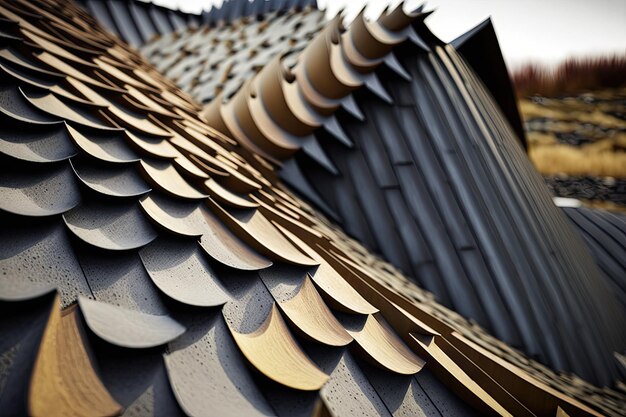
Neutral Color Palettes
White, black and neutral colors dominate modern spaces, creating a sense of serenity.
In modern interior design, the use of white, black and neutral colors plays a pivotal role in establishing a sense of serenity and sophistication. These timeless hues serve as the foundation for contemporary spaces, offering a canvas upon which various design elements can harmoniously come together. Here’s an extension of this idea:
1. Timeless Elegance: White, black and neutral tones are like the classics in the world of interior design. They exude a timeless elegance that never goes out of style. By choosing these colors as the primary palette for your modern space, you create an enduring aesthetic that remains relevant and appealing for years to come.
2. Clean and Minimalist: These colors inherently promote a clean and minimalist aesthetic. The absence of bold or clashing colors allows for a clutter-free and uncluttered visual experience. This minimalism enhances the sense of serenity in your space, making it a tranquil and peaceful environment.
3. Versatile Foundations: White, black and neutrals are incredibly versatile. They provide a neutral backdrop that allows you to experiment with pops of color or diverse textures. Whether you want to introduce vibrant accents through furniture, artwork or decor or you prefer a monochromatic scheme, these colors adapt seamlessly to your design preferences.
4. Light and Space: White, in particular, is known for its ability to reflect light and create an illusion of more space. In smaller rooms or spaces with limited natural light, using white as a dominant color can make the area feel open, airy and inviting.
5. Tranquil Retreat: In a world filled with distractions and noise, modern spaces with white, black and neutral colors become sanctuaries of tranquility. They offer a respite from the chaos outside, allowing you to unwind, relax and recharge.
6. Easy Maintenance: Another practical advantage is that these colors are forgiving when it comes to maintenance. Stains and wear are less conspicuous on neutral surfaces, making them easier to maintain and keep looking pristine.
7. Personalized Expression: While the overall palette is neutral, you have the freedom to infuse your personality and style into the space through furniture, art, textiles and decor. This allows you to create a unique and personalized environment that still exudes modern elegance.
Incorporating white, black and neutral colors into your modern space is not just about following a trend; it’s about creating a serene and harmonious environment that transcends time. It’s a design choice that not only enhances the aesthetics of your space but also contributes to your overall sense of well-being and comfort. So, embrace the serenity of these colors and watch as your modern interior becomes a true haven of style and tranquility.
You can also read more about this here: Vintage Interior Design | How To Create Beautiful Vintage Interiors
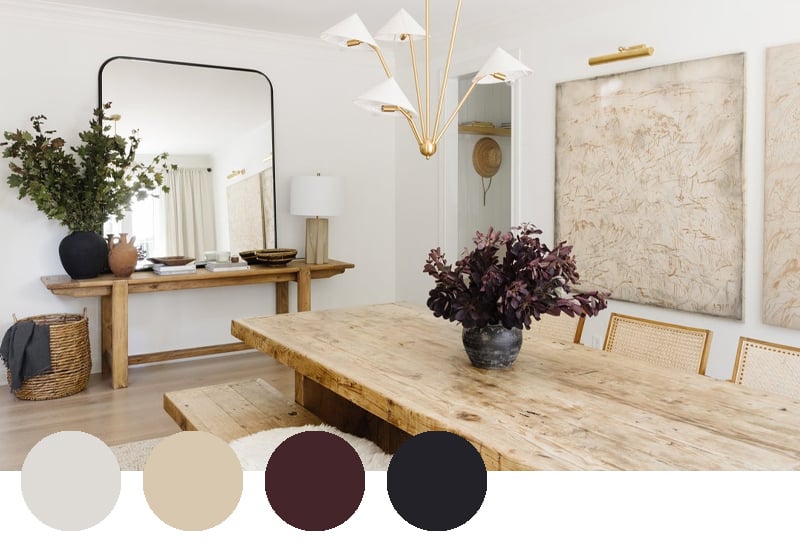
Functional Decor
Modern bedrooms prioritize functionality and practicality, with storage solutions integrated into the design.
Modern bedrooms are a testament to the marriage of style and substance. They prioritize functionality and practicality, recognizing that a well-organized space is essential for both relaxation and efficiency. Here’s how the concept of integrated storage solutions elevates the modern bedroom:
1. Streamlined Aesthetics: In a modern bedroom, clutter is the enemy of tranquility. By seamlessly integrating storage solutions into the design, you maintain a clean and clutter-free space. This not only promotes a sense of calm but also highlights the room’s sleek, minimalist aesthetics. Consider built-in wardrobes, floating shelves or concealed storage under the bed to keep belongings neatly out of sight.
2. Maximizing Space: Modern bedrooms often embrace the concept of making the most out of limited space. Integrated storage solutions are designed to maximize every inch, ensuring that no corner goes to waste. Wall-mounted shelving, wall-to-wall closets and under-bed drawers are examples of space-saving techniques that modern design excels in.
3. Customization: One of the beauties of integrated storage is its ability to be customized to your specific needs. Whether you require extra hanging space, shoe racks or pull-out drawers, modern bedroom designs can be tailored to accommodate your personal belongings and preferences. This level of customization ensures that your space remains functional and well-suited to your lifestyle.
4. Clutter-Free Serenity: The importance of a clutter-free environment in the bedroom cannot be overstated. It allows you to clear your mind, fostering a sense of serenity that’s essential for rest and relaxation. With ample storage options, you can easily tuck away items like clothes, accessories and even electronics, minimizing distractions and promoting a peaceful atmosphere.
5. Ergonomic Design: Modern storage solutions are often designed with ergonomics in mind. This means that drawers, cabinets and closets are easily accessible, reducing the strain of reaching for items or rummaging through clutter. The result is a more efficient and user-friendly bedroom space.
6. Style and Versatility: Integrated storage doesn’t sacrifice style for functionality. Modern designs seamlessly incorporate storage elements into the overall decor, creating a cohesive and aesthetically pleasing look. Whether you prefer a sleek, contemporary finish or a more eclectic mix of materials, modern bedrooms offer versatility in design to suit various tastes.
7. Future-Proofing: As your needs evolve, modern integrated storage can adapt. It provides a foundation for a bedroom that can grow with you, accommodating changing storage requirements over time. This long-term flexibility is a hallmark of modern design principles.
In sum, modern bedrooms prioritize functionality and practicality through the integration of storage solutions. By doing so, they create spaces that are not only visually appealing but also highly efficient and adaptable. This approach ensures that your bedroom remains a serene sanctuary where style and functionality coexist harmoniously.
To delve further into this matter, we encourage you to check out the additional resources provided here: The Indie Room Decor Guide: Transform Your Space with Style

Technology Integration
Smart home technology and contemporary lighting often find their place in modern bedrooms.
In the ever-evolving landscape of modern bedroom design, smart home technology and contemporary lighting stand as dynamic and indispensable elements. Their seamless integration not only enhances the functionality of your bedroom but also elevates its overall aesthetics. Here’s an in-depth exploration of why these two elements find their place in modern bedrooms and how they contribute to creating a truly sophisticated and efficient space:
1. Seamless Automation: Smart home technology, often centered around voice-activated assistants like Amazon Alexa or Google Assistant, has revolutionized how we interact with our bedrooms. From adjusting lighting levels to setting the thermostat, you can control various aspects of your bedroom environment effortlessly with voice commands or smartphone apps.
2. Personalized Lighting: Contemporary lighting fixtures in modern bedrooms aren’t just sources of illumination; they’re works of art that can set the tone for your space. With adjustable color temperatures and dimming capabilities, these fixtures allow you to create the perfect ambiance, whether it’s for relaxation, productivity or romance.
3. Energy Efficiency: Smart lighting systems can be programmed to conserve energy. Motion sensors can detect when a room is unoccupied and automatically turn off lights, while dimmers and timers allow for precise control over energy consumption. This not only reduces your carbon footprint but also saves on electricity bills.
4. Circadian Rhythm Support: Modern lighting solutions often feature tunable white light, which mimics the natural changes in sunlight throughout the day. This can help regulate your circadian rhythm, improving sleep quality and overall well-being.
5. Connectivity and Integration: Smart technology in the bedroom isn’t limited to lighting. It can encompass everything from automated blinds and curtains to integrated sound systems. These interconnected devices create a cohesive and convenient bedroom experience.
6. Enhanced Security: Smart home technology can also enhance the security of your bedroom. Connected door locks, security cameras and motion detectors can provide peace of mind and keep your space safe.
7. Simplified Morning and Evening Routines: With smart technology, you can create custom routines that automate various tasks in your morning and evening routines. For example, your bedroom lights can gradually brighten in the morning to gently wake you up, while in the evening, they can dim to prepare you for sleep.
8. Entertainment Hub: Modern bedrooms often double as entertainment spaces. With smart TVs, streaming devices and integrated sound systems, you can enjoy your favorite shows, movies and music without leaving the comfort of your bed.
9. Flexibility and Adaptability: One of the key features of modern bedroom technology is its flexibility. You can easily adapt and upgrade your smart home devices as new technologies emerge, ensuring that your bedroom remains on the cutting edge of convenience and innovation.
10. Sustainability and Longevity: Many contemporary lighting fixtures are designed with sustainability in mind, utilizing energy-efficient LED technology that has a longer lifespan than traditional bulbs. This not only reduces maintenance but also contributes to a more eco-friendly bedroom.
In summary, the marriage of smart home technology and contemporary lighting in modern bedrooms is a harmonious union of convenience, efficiency, aesthetics and well-being. These elements not only cater to your modern lifestyle but also pave the way for a bedroom that is adaptable, eco-conscious and exquisitely designed, creating a space that reflects the sophistication and innovation of our digital age.
If you’d like to dive deeper into this subject, there’s more to discover on this page: Aesthetics of the Everyday (Stanford Encyclopedia of Philosophy)

Contemporary Appeal
Modern design embraces current trends and provides a fresh, up-to-date look.
Modern design embraces current trends and provides a fresh, up-to-date look. It’s a style that constantly evolves to reflect contemporary aesthetics and innovations. Here are some key aspects that define modern design and contribute to its enduring popularity:
Clean Lines: Modern design is characterized by clean, straight lines and simplicity. Furniture and architectural elements often feature crisp, uncluttered shapes that create a sense of order and sophistication.
Minimalism: Minimalistic principles are at the core of modern design. This approach emphasizes “less is more.” It encourages the removal of unnecessary ornamentation and focuses on functional, essential elements, resulting in a clutter-free and visually serene environment.
Open Spaces: Modern interiors prioritize open, spacious layouts. Large windows and an abundance of natural light contribute to an airy feel. This openness encourages a sense of freedom and relaxation.
Neutral Color Palette: Modern design tends to favor neutral color palettes with pops of bold color or texture. Whites, grays and blacks provide a versatile backdrop, allowing room for individuality and personal expression through accents and decor.
Innovative Materials: Modern design often incorporates innovative materials, such as glass, steel and concrete. These materials can create sleek and contemporary finishes that stand out in the design landscape.
Functionality: Modern furniture and fixtures prioritize functionality without compromising on style. Multi-purpose pieces, such as storage ottomans or modular shelving units, maximize space and utility.
Technological Integration: In today’s modern homes, technology is seamlessly integrated. From smart home systems to sleek, high-tech appliances, modern design embraces the convenience and efficiency that technology brings.
Natural Elements: Contrary to the misconception that modern design is entirely devoid of warmth, it often incorporates natural elements. Wood accents, indoor plants and organic textures soften the overall look and create a harmonious balance.
Ergonomics: Modern design takes into account ergonomics and user comfort. Furniture and fixtures are designed with both aesthetics and functionality in mind, ensuring a comfortable and enjoyable living experience.
Timelessness: While modern design adapts to current trends, it also possesses a timeless quality. Its emphasis on simplicity and functionality ensures that it remains relevant and appealing, making it a safe choice for long-term design investments.
In summary, modern design is a versatile and evolving style that continues to captivate homeowners and designers alike. Its blend of clean lines, minimalism, functionality and adaptability to current trends makes it a go-to choice for those seeking a contemporary, fresh and timeless look for their living spaces.
To delve further into this matter, we encourage you to check out the additional resources provided here: 100 Modern Fireplace Ideas to Inspire Your Next Home Redesign
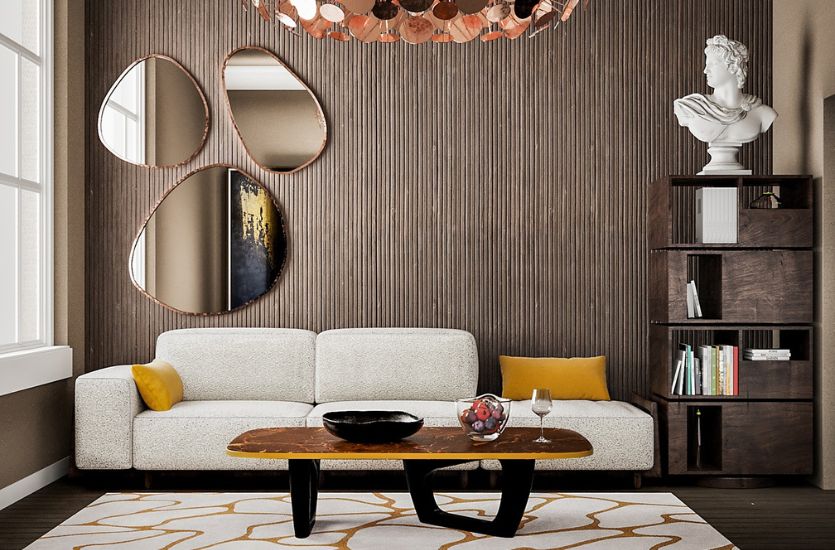
Space Efficiency
The minimalistic approach is ideal for optimizing smaller bedrooms and creating a sense of openness.
The minimalistic approach to bedroom design offers several advantages, especially when it comes to smaller spaces. It’s not just about the aesthetic appeal; it can significantly enhance the functionality and comfort of your bedroom, making it a haven of tranquility and efficiency.
1. Maximizing Space: In smaller bedrooms, every square inch counts. Minimalist design prioritizes open spaces and simple layouts, which can make your room feel more spacious and less cramped. By reducing clutter and unnecessary furniture, you can maximize the usable area, making it easier to move around and store essential items.
2. Enhancing Visual Serenity: The absence of excess clutter and ornate decor elements in a minimalist bedroom can create a soothing, uncluttered atmosphere. This visual simplicity promotes a sense of calm and relaxation, making it easier to unwind after a long day.
3. Streamlined Storage Solutions: Minimalist design often incorporates built-in or hidden storage solutions, such as under-bed drawers, wall-mounted shelving or concealed closets. These efficient storage options help you keep your space organized without sacrificing aesthetics.
4. Versatile Color Palettes: Minimalist bedrooms typically feature neutral color palettes dominated by whites, blacks, grays and muted earth tones. These colors not only create a timeless, sophisticated look but also serve as a versatile backdrop for introducing pops of color through decor or accent pieces.
5. Focus on Essential Furnishings: A minimalist bedroom usually includes only essential furnishings, such as a bed, nightstands and a wardrobe or dresser. This selective approach ensures that every piece serves a practical purpose, eliminating unnecessary clutter and allowing for a more organized and tidy space.
6. Easier Maintenance: With fewer items to clean, a minimalist bedroom is generally easier to maintain. It reduces the time and effort required for regular cleaning and decluttering, freeing up more of your valuable time for other activities and relaxation.
7. Personalization Through Details: While the overall design may be minimalist, you can still infuse your personality and style into the room through carefully chosen details. A piece of artwork, a unique headboard or a cozy throw blanket can add character without overwhelming the space.
8. Promoting Mindfulness: Living in a minimalist environment encourages mindfulness about your possessions. It prompts you to carefully consider what you truly value and need, which can lead to more conscious consumption and a decluttered, stress-free living space.
In essence, a minimalist approach to bedroom design is not just about aesthetics; it’s about optimizing your space to enhance functionality, comfort and overall well-being. Whether you have a small bedroom or simply appreciate the beauty of simplicity, embracing minimalism in your bedroom decor can lead to a more organized, serene and enjoyable living space.
Additionally, you can find further information on this topic by visiting this page: Utilizing 3D Technology for Custom Home Décor

Easy Maintenance
Modern furniture is often designed for low maintenance, making it suitable for busy lifestyles.
In our fast-paced world, where time is a precious commodity, modern furniture shines as a practical and stylish choice for those leading busy lives. Expanding on the idea of modern furniture and its compatibility with hectic lifestyles, here are some compelling reasons why it’s an excellent fit:
Durability and Longevity: Modern furniture is typically crafted with quality materials and innovative construction techniques. This results in furniture that can withstand wear and tear, making it a long-lasting investment. Its resilience means you won’t have to worry about frequent replacements or repairs.
Easy Cleaning and Maintenance: Modern furniture often features sleek, smooth surfaces and finishes that are easy to clean and maintain. This is a significant advantage for individuals with busy schedules who prefer spending their free time on activities other than extensive furniture care.
Timeless Design: Many modern furniture pieces boast timeless designs characterized by clean lines and minimalistic aesthetics. This design philosophy ensures that your furniture remains stylish and relevant, even as trends evolve. You won’t feel the need to update your decor frequently.
Multi-Functional Pieces: Modern furniture often prioritizes functionality and versatility. This means you can invest in pieces that serve multiple purposes, such as a sofa bed for accommodating guests or a coffee table with hidden storage to keep your living space organized.
Space-Efficient Solutions: With the trend toward urban living and smaller homes, modern furniture caters to the need for space efficiency. It’s designed to make the most of limited space, making it ideal for apartments or compact living environments.
Incorporating Technology: Some modern furniture integrates technology seamlessly. Features like built-in USB ports, wireless charging and adjustable settings in sofas and chairs enhance convenience and accommodate the demands of a tech-savvy lifestyle.
Eco-Friendly Options: Sustainability is a key focus in modern furniture design. Many manufacturers use eco-friendly materials and practices, offering conscious consumers environmentally responsible choices.
Customization: Modern furniture often allows for customization, enabling you to select fabrics, colors and configurations that suit your preferences and lifestyle. Personalization ensures your furniture aligns with your unique needs and aesthetic taste.
Compact and Modular Designs: For those with dynamic lifestyles or frequent relocations, modern furniture’s modular and compact designs make moving and rearranging a breeze. You can adapt your living space to changing needs without significant hassle.
Time-Saving Shopping: Modern furniture is readily available through online retailers and showrooms, simplifying the shopping process. You can browse and purchase furniture conveniently, saving time for other priorities.
Resale Value: The durability and timeless appeal of modern furniture can contribute to higher resale values. If you ever decide to update your decor, selling your well-maintained modern pieces can be a profitable option.
Modern furniture’s low-maintenance nature, durability and adaptability align seamlessly with the demands of busy lives. It not only simplifies everyday living but also ensures that your home remains a stylish and functional sanctuary amid the hustle and bustle of modern life.
To expand your knowledge on this subject, make sure to read on at this location: Free vintage presentation templates to customize | Canva
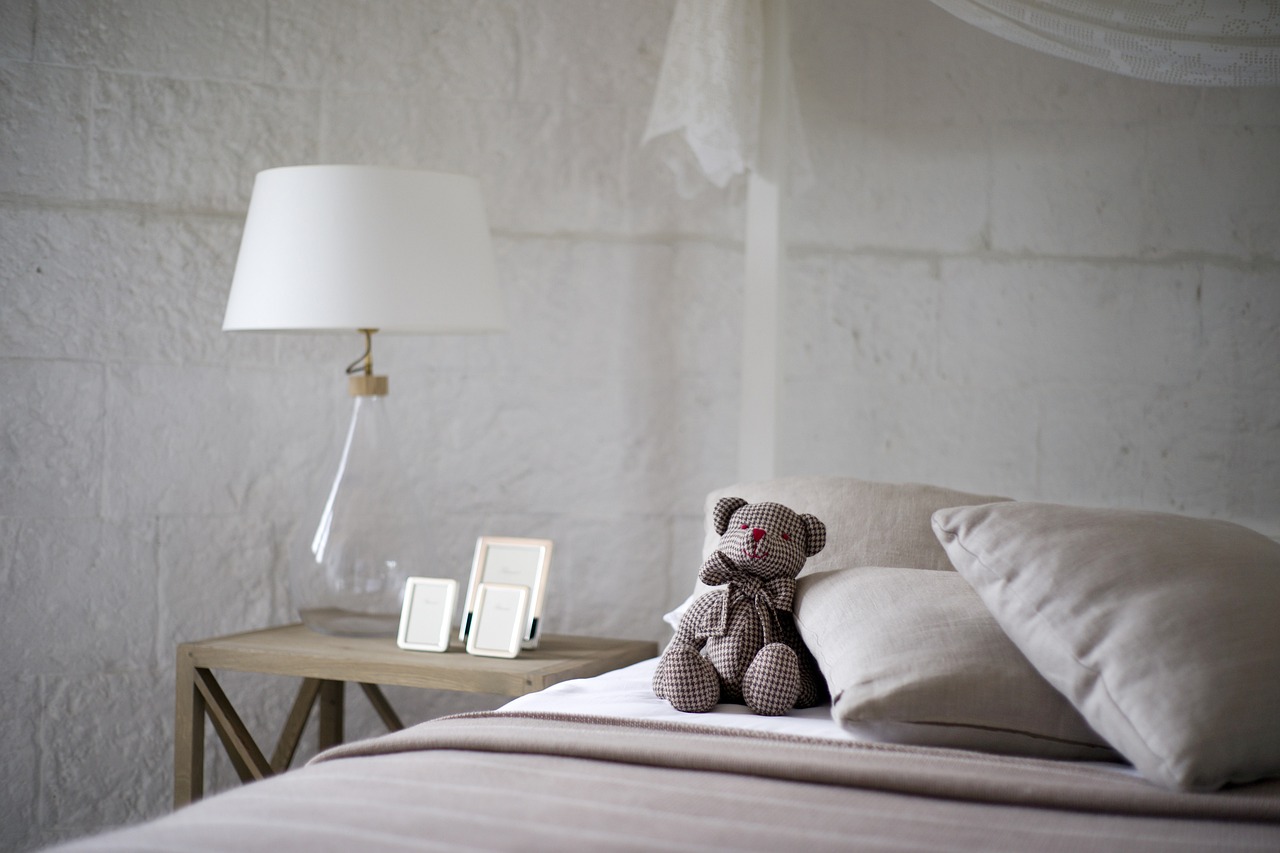
Technology Integration
The incorporation of smart technology can enhance convenience and comfort.
The incorporation of smart technology can significantly elevate the convenience and comfort levels within your living spaces. These innovative devices and systems are designed to simplify daily tasks, increase efficiency and create an overall more enjoyable and connected environment.
1. Smart Lighting: Smart lighting systems offer a range of benefits beyond traditional lighting. You can adjust the brightness and color temperature to suit your mood or the time of day. Set schedules for lights to automatically turn on or off, enhancing security and energy efficiency. Voice-activated controls also allow for effortless adjustments, making it easier than ever to create the perfect ambiance in any room.
2. Home Automation: Smart home hubs and automation platforms enable you to control various aspects of your home with a single app or voice command. You can seamlessly integrate smart thermostats, locks and security cameras, allowing for remote monitoring and control. This not only enhances security but also provides the convenience of adjusting your home’s temperature, lighting and security settings from anywhere.
3. Voice Assistants: Voice-activated virtual assistants, such as Amazon Alexa, Google Assistant and Apple’s Siri, have become central to many smart homes. They can answer questions, play music, control smart devices and even provide updates on the weather or news. This hands-free interaction streamlines tasks and adds an element of futuristic convenience to your daily life.
4. Smart Appliances: Smart appliances, like refrigerators, ovens and washing machines, offer features that simplify household chores. You can receive alerts when it’s time to replace a water filter or when your laundry is done. Some appliances even offer recipe suggestions and cooking guidance, making meal preparation more accessible and enjoyable.
5. Entertainment: Smart TVs and streaming devices give you access to a world of entertainment with streaming services, apps and voice-activated controls. The ability to cast content from your smartphone or tablet to the TV enhances the viewing experience. Additionally, multi-room audio systems allow you to enjoy music throughout your home, creating a seamless and immersive audio experience.
6. Energy Efficiency: Smart technology can help you reduce your environmental footprint and lower utility bills. Smart thermostats learn your temperature preferences and adjust heating and cooling accordingly. Energy-efficient lighting controls ensure that lights are only on when needed. These features not only save you money but also contribute to a more sustainable lifestyle.
7. Convenience: Above all, smart technology simplifies everyday tasks, providing convenience that can make a significant difference in your quality of life. From automatically brewing your morning coffee to adjusting the blinds with a voice command, these technologies free up time and energy for more meaningful pursuits.
Incorporating smart technology into your living spaces isn’t just about embracing the latest trends; it’s about creating a home that caters to your needs and preferences. With the right selection and integration of smart devices, you can enjoy a more comfortable, efficient and connected lifestyle, all while simplifying the management of your home’s essential functions.
Explore this link for a more extensive examination of the topic: Exploring Vintage Interior Design and its Modern Adaptations …

Potential Sterility
The minimalist approach may sometimes create a sterile or cold atmosphere if not balanced with warmth.
While the minimalist approach champions simplicity and clean lines, it’s important to strike a balance to prevent the space from feeling sterile or cold. Here’s how you can infuse warmth into a minimalist setting to create a harmonious and inviting atmosphere:
Natural Materials: Incorporate natural materials like wood, stone and leather. Wooden furniture, whether in the form of a dining table or bookshelves, adds warmth and a tactile element to the space. Natural stone countertops or accent walls can provide texture and visual interest.
Warm Color Palette: Introduce warm, earthy colors into the decor. Soft neutrals like warm grays, beige or taupe can create a cozy backdrop. Consider using warm accent colors in textiles, artwork or small decor items to infuse vibrancy.
Soft Textiles: Add softness with textiles. Plush rugs, cozy throw blankets and tactile cushions on minimalist furniture can instantly make the space more inviting. Choose fabrics like wool, velvet or faux fur for extra comfort.
Layered Lighting: Create a warm ambiance through layered lighting. Combine overhead fixtures with soft, ambient lighting like floor lamps, table lamps and wall sconces. Opt for warm-toned light bulbs to avoid harsh, clinical lighting.
Personal Touches: Incorporate personal touches and sentimental items. Display family photos, artwork or heirlooms to add character and make the space feel lived-in. These personal elements humanize the minimalist environment.
Greenery and Plants: Bring nature indoors with houseplants. The presence of greenery not only adds warmth but also promotes a sense of well-being. Choose planters and pots that complement the minimalist aesthetic.
Texture Variety: Experiment with textures. Combining different textures, such as a smooth marble countertop with a rough-hewn wooden coffee table, adds depth and visual interest to the space.
Soft Furniture: Consider comfortable, upholstered furniture with simple lines. Sofas and chairs that offer plush seating can be the perfect counterbalance to minimalist design elements.
Artwork and Decor: Select artwork and decor pieces that resonate with you. A well-chosen piece of art or a sculpture can serve as a focal point and infuse personality and warmth into the room.
Cosy Nook: Create a cozy reading nook or seating area. A corner with a comfortable chair, soft lighting and a small side table can become a warm and inviting spot for relaxation.
Candles and Aromas: Scented candles or essential oil diffusers can add both warmth and a delightful aroma to the room. Choose scents that evoke comfort and relaxation.
Balance and Simplicity: Maintain a sense of balance and simplicity. While adding warmth, be mindful not to clutter the space with too many accessories. Minimalism thrives on the principle of “less is more.”
By integrating these elements, you can achieve a minimalist space that exudes both simplicity and warmth. The key is to strike a delicate equilibrium between the clean, uncluttered lines of minimalism and the inviting, comforting elements that make a house feel like a warm and welcoming home.
Explore this link for a more extensive examination of the topic: Interior Design – Interiors by Steven G

Lack of Personality
Some modern designs can feel generic, lacking the personal touches that vintage design often offers.
In the world of interior design, there’s a timeless appeal to vintage decor that often stems from the rich history, character and personal touches it embodies. Expanding on the notion that modern designs can sometimes feel generic, let’s delve deeper into the enduring allure of vintage design and the personal elements that it brings to a living space:
Storytelling Through Decor: Vintage design pieces have a history and a story to tell. Each antique or retro item in a vintage-themed room carries with it a sense of nostalgia and intrigue. These pieces often spark conversations and allow you to share the stories behind them with guests, adding a layer of depth to your home.
Unique Character: Vintage decor is inherently unique. Unlike mass-produced modern furnishings, vintage items bear the marks of craftsmanship, individuality and the passage of time. These imperfections and quirks are what give vintage pieces their character and charm.
Personal Connection: When you incorporate vintage elements into your home, you’re not just decorating; you’re curating a collection of items that resonate with you on a personal level. Whether it’s a piece of furniture passed down through generations or a flea market find that you fell in love with, each item holds sentimental value.
Eclectic Blending: Vintage design allows for a diverse and eclectic mix of styles. You can seamlessly blend pieces from different eras and origins to create a harmonious and visually engaging space. This flexibility encourages you to embrace your unique design preferences.
Customization and DIY: Vintage design often invites creativity and DIY projects. Refinishing an antique dresser, reupholstering vintage chairs or repurposing old doors into furniture are just a few examples of how you can put your personal stamp on vintage pieces and tailor them to your style.
Sustainability: Embracing vintage design aligns with eco-conscious living. Reusing and repurposing vintage items reduces the demand for new production and minimizes waste. It’s a sustainable approach to interior design that reflects a commitment to the environment.
Emotional Comfort: Vintage decor can evoke a sense of comfort and nostalgia. It transports you to another time, evoking memories and emotions associated with that era. This emotional connection fosters a cozy and inviting atmosphere in your home.
Treasure Hunting: Scouring thrift stores, antique markets and estate sales in search of vintage pieces is an adventure in itself. The thrill of the hunt and the excitement of discovering a hidden gem can become a rewarding hobby.
Timeless Appeal: Vintage design possesses a timeless quality that transcends trends and fads. While modern styles may come and go, classic vintage elements remain relevant and enduring, ensuring that your decor remains stylish for years to come.
Celebration of Heritage: Vintage design allows you to celebrate your heritage and cultural roots. Incorporating pieces from your heritage or exploring design styles from different eras can be a way to connect with your family’s history.
Incorporating vintage design into your home isn’t just about aesthetics; it’s about weaving your personal history, experiences and passions into your living space. Vintage decor offers a canvas for self-expression, storytelling and the creation of a truly unique and meaningful home environment.
Explore this link for a more extensive examination of the topic: 50 Modern Farmhouse Bedroom Ideas for 2023 | Photos & Tips

Rapid Trend Changes
Staying up-to-date with the latest modern trends may require frequent updates and changes.
Staying abreast of the latest modern trends in interior design can indeed be an exciting and dynamic journey. However, it’s essential to recognize that this pursuit may come with some considerations, particularly the need for frequent updates and changes in your living space. Here’s a more in-depth exploration of this aspect:
1. Evolving Aesthetics:
Modern design trends have a tendency to evolve rapidly, often in response to shifts in culture, technology and societal preferences. What’s considered fashionable today may become outdated in a few years. As a result, staying current with modern trends may necessitate periodic adjustments to your decor and furnishings to keep your space in vogue.
2. Budget Implications:
Frequent updates to match the latest trends can strain your budget. High-quality, on-trend furniture and decor items can be expensive and replacing them regularly can lead to substantial costs over time. It’s essential to strike a balance between following trends and maintaining a budget that aligns with your financial goals.
3. Environmental Impact:
Constantly updating your interior design can contribute to waste and environmental concerns. Discarding perfectly functional furniture and decor items in favor of new trends may lead to increased consumption and waste. Sustainable design practices, such as repurposing and upcycling, can help mitigate this impact.
4. Personal Style vs. Trendy Looks:
While staying current with modern trends can be fun and inspiring, it’s also crucial to consider your personal style and preferences. Following trends too closely may lead to a home that lacks a distinctive and authentic reflection of your personality. Strive for a balance that allows you to incorporate trends while maintaining a sense of individuality in your decor.
5. Practicality and Functionality:
Some trendy design elements may prioritize aesthetics over practicality and functionality. It’s essential to evaluate how well a trend aligns with your lifestyle and the needs of your household. A beautiful but impractical design may become frustrating in day-to-day use.
6. Time and Effort:
Regularly updating your living space to match modern trends requires time and effort. From researching the latest trends to shopping for new items and making design changes, it can be a time-consuming process. Consider whether you have the bandwidth to keep up with these demands.
7. Longevity of Classics:
Classic design elements and timeless styles endure through changing trends. Incorporating a blend of timeless pieces with trendy accents can help create a well-balanced and enduring interior. Classic elements often retain their appeal and can be more cost-effective in the long run.
8. Personal Satisfaction:
Ultimately, the decision to stay current with modern trends or maintain a more timeless decor style should align with your personal satisfaction and happiness. Your home should be a space where you feel comfortable and content, whether you choose to embrace the latest trends or create a design that transcends fleeting fashions.
In conclusion, staying up-to-date with modern design trends can be a dynamic and enjoyable aspect of interior design. However, it’s important to approach this endeavor with a mindful balance, considering factors like budget, environmental impact, personal style and practicality. Finding the right equilibrium allows you to create a living space that is both fashionable and fulfilling, where you can express your style while enjoying a sense of lasting comfort and coherence.
To expand your knowledge on this subject, make sure to read on at this location: Interior Design Trends 2023: Experts Share What’s in This Year …
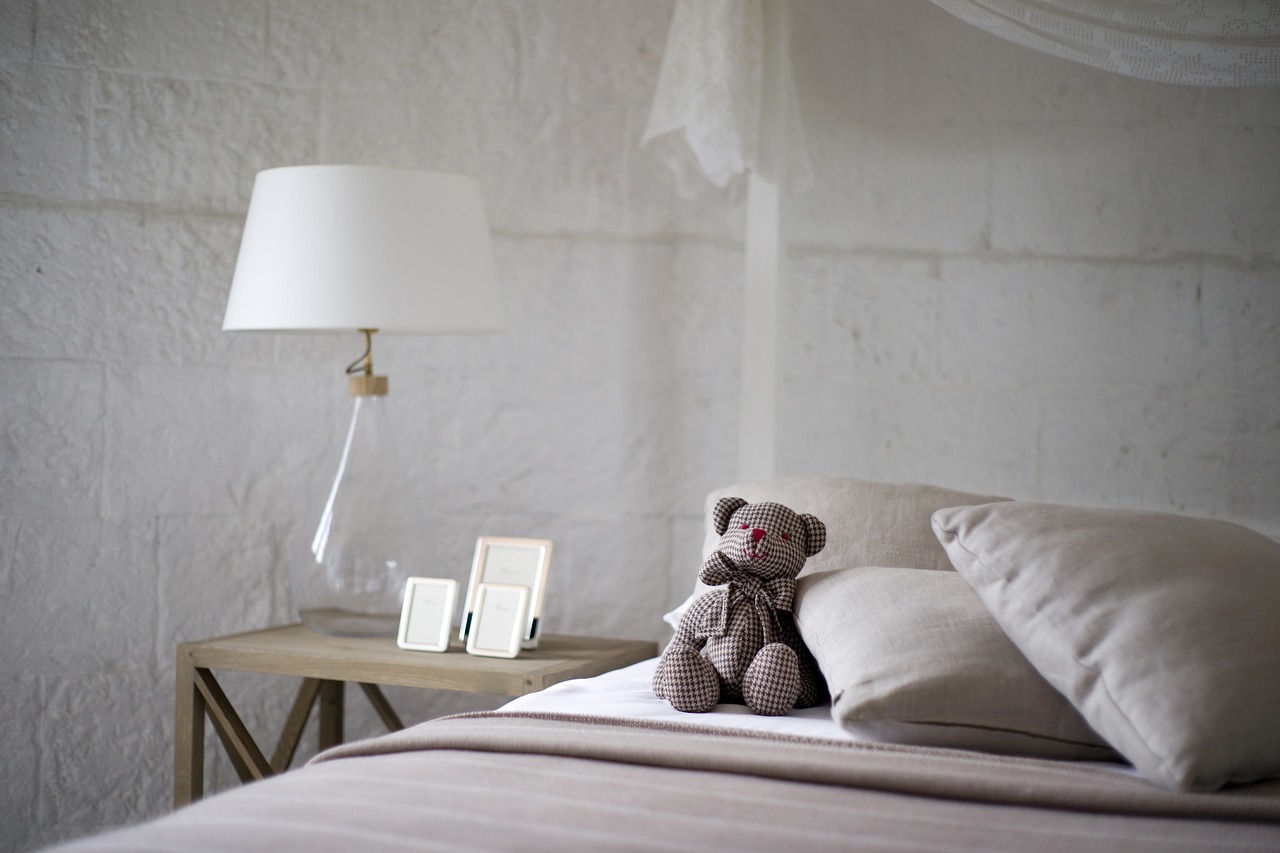
Whether you lean toward the nostalgia of vintage design or the sleekness of modern aesthetics, the choice between the two ultimately comes down to your personal preferences and lifestyle. Vintage bedrooms exude charm and history, while modern bedrooms prioritize functionality and contemporary appeal.
You don’t have to limit yourself to one style exclusively; many homeowners successfully blend elements of both vintage and modern design to create a unique and eclectic bedroom that reflects their personality. So, whether you’re drawn to the past or excited about the future, there’s a bedroom design aesthetic that’s perfect for you. The most important thing is to create a space that feels like home and meets your needs and desires.
To delve further into this matter, we encourage you to check out the additional resources provided here: Vintage Bedroom on a Budget – Review by Old House Journal
More links
Looking for more insights? You’ll find them right here in our extended coverage: 10 Most Popular Interior Design Styles to Know Now | Architectural …
